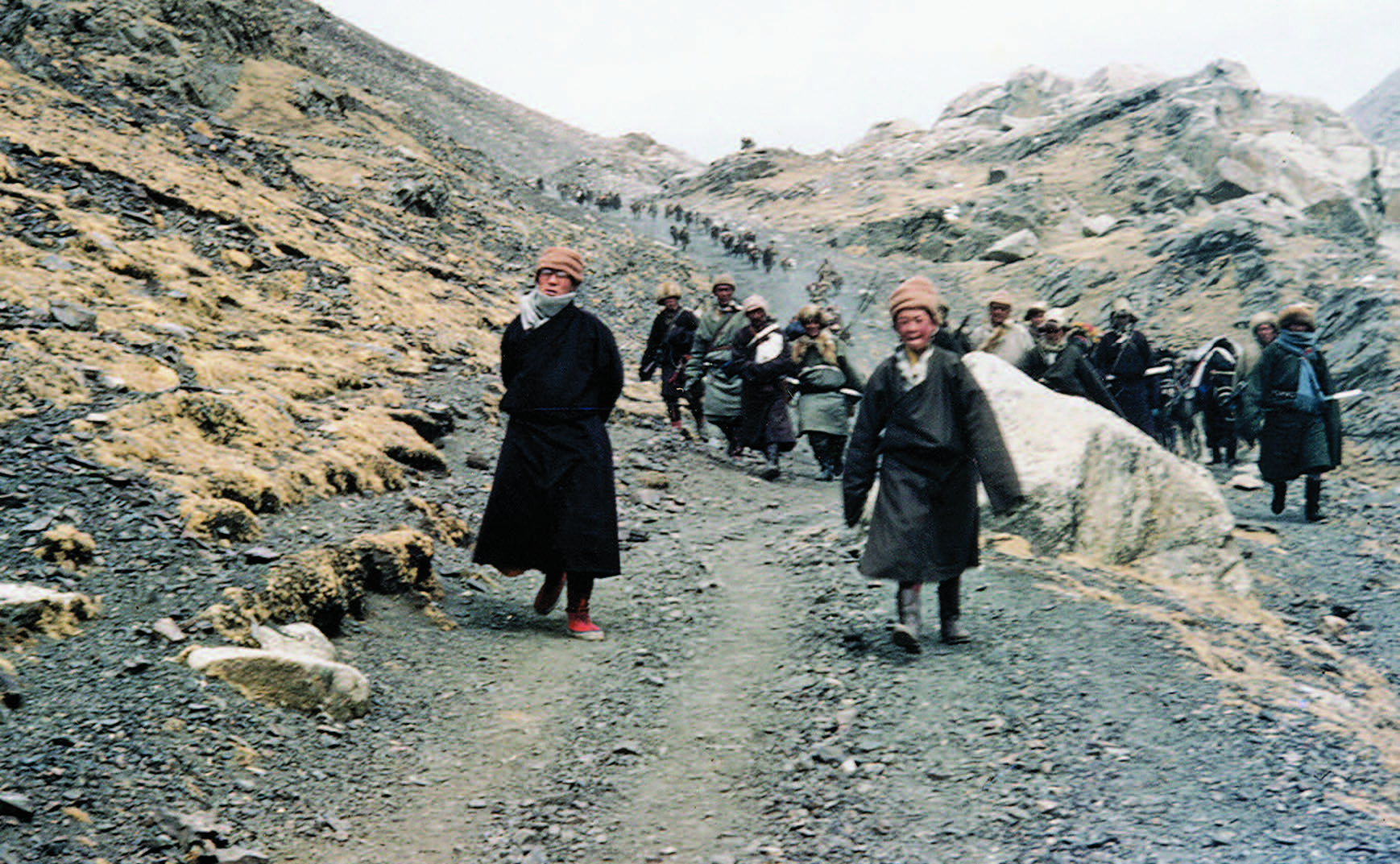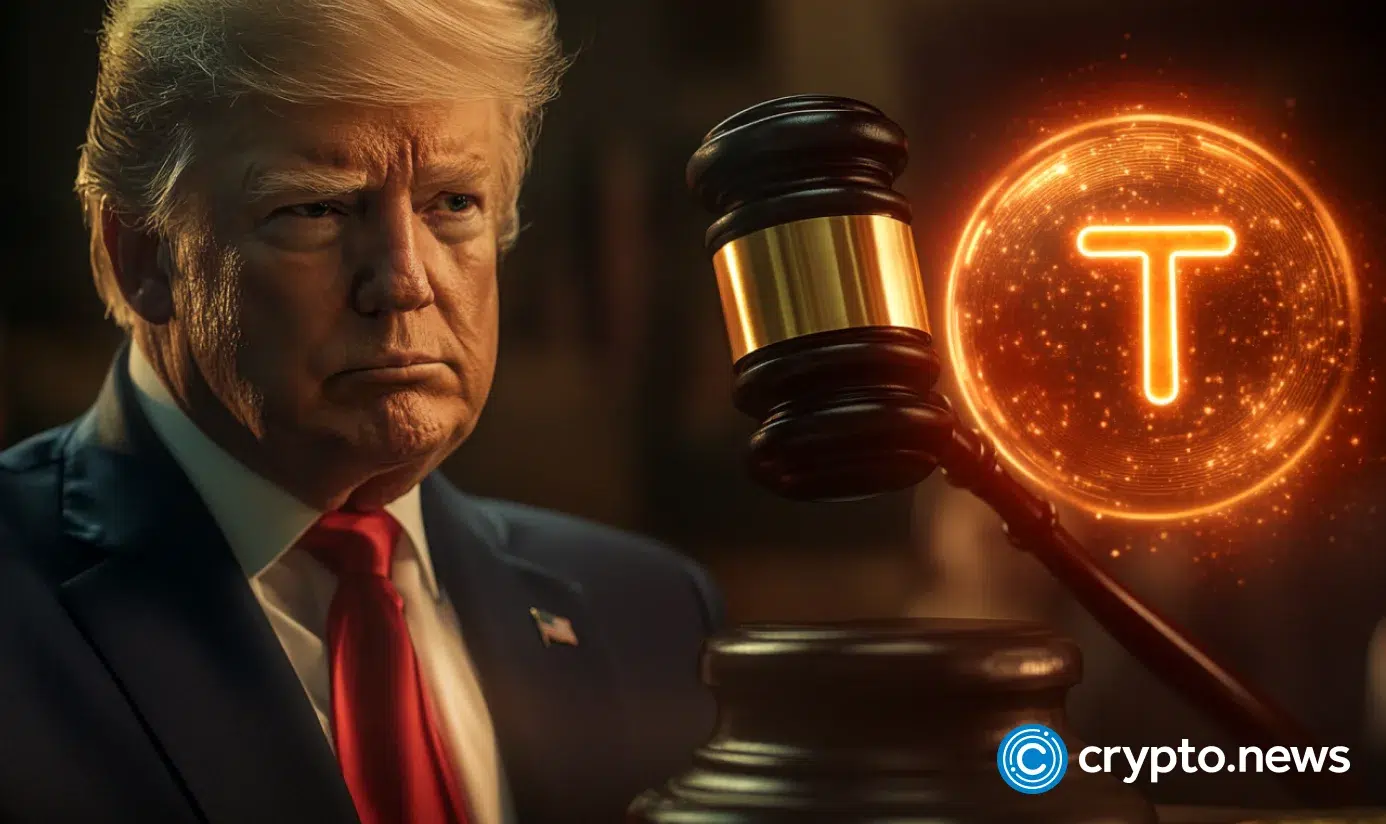‘Voice for the Voiceless’
The Dalai Lama’s new book offers a searing political account of Tibet’s fate—and a vision of compassion-based resistance. The post ‘Voice for the Voiceless’ appeared first on Tricycle: The Buddhist Review.

On the night of March 17, 1959, the 23-year-old Dalai Lama quietly changed out of his monastic robes and into layman’s clothing. He slipped his glasses into his pocket, shouldered a rifle borrowed from a bodyguard, and stepped into the darkness outside Norbulingka Palace. A fortnight later, he crossed the border into India. “There is nothing dramatic about our crossing of the frontier,” he wrote, “the country was equally wild on each side of it, and uninhabited. I saw it in a daze, of sickness and weariness, and unhappiness deeper than I can express.”
Since then, the Dalai Lama has won a Nobel Peace Prize, become a symbol of nonviolence and a prominent spiritual master promoting religious harmony, and most importantly, led his displaced people into a thriving diasporic community. Along with these immense commitments, the Dalai Lama has also authored (or coauthored) nearly a hundred books, including two memoirs, numerous works on Buddhist philosophy, as well as books on science, ethics, and human well-being.

Voice for the Voiceless: Over Seven Decades of Struggle with China for My Land and My People
By the Dalai Lama. William Morrow, 2025, 256 pp., $28.00, hardcover
Unlike his previous books, Voice for the Voiceless: Over Seven Decades of Struggle with China for My Land and My People provides a deeply political account of Tibet, his decades-long effort to resolve the crisis, and China’s intransigence. “This book is, primarily, an account of more than seven decades of my dealing with successive leaders of Communist China on behalf of Tibet and its people,” the Dalai Lama writes. “It is also an appeal to the conscience of the Chinese people . . . as well as the broader international community, to care for the plight of the Tibetan people. Ours is an existential crisis: the very survival of an ancient people and their culture, language, and religion is at stake.”
Since the age of 19, the Dalai Lama has engaged with Communist leaders, beginning with Mao, whom he met in 1954, right through to Xi Jinping, under whose rule China has transmuted into a society of “market capitalism tied to a Leninist obsession with state control” enforced by state-of-the-art digital surveillance. He has come to understand the shifting sands of global politics. As a result, the Tibetan leader reached out to the Chinese side to bring an end to the long-standing issue of Tibet based on a negotiated settlement that does not seek independence. Although many Tibetans, including an elder brother, expressed strong reservations about this approach, the Dalai Lama writes that his stand is based on honesty, transparency, and the spirit of trust and mutual benefit. The Tibetan leader “genuinely believed that he was serious” when the Chinese leader Deng Xiaoping (1904–1997) said that “everything can be discussed except independence.”
Observing the Chinese leaders’ lack of vision and stubbornness, the Dalai Lama remarks that his approach to resolving the Tibetan conflict “hit the wall of rejection.” He describes them as having “mouths to speak but no ears to listen.” Nevertheless, the Dalai Lama believes that the only viable solution is for the Chinese and Tibetans to sit down together and talk. The exiled Tibetan leadership continues to press for dialogue.
 The Dalai Lama with young refugee children in the early 1960s. Image courtesy of Tibet Museum, Dharamshala.
The Dalai Lama with young refugee children in the early 1960s. Image courtesy of Tibet Museum, Dharamshala.Despite these sincere overtures, China has responded with increasing hostility. Beijing believes the Tibet issue will wither with the passing of the present Dalai Lama, who turns 90 this summer. It has engaged in a sustained campaign to vilify the Nobel laureate, calling him “a wolf in monk’s robes, a devil with a human face,” and a “splittist.” The Third Tibet Work Forum in 1994 called for opposing the “Dalai clique” through a “life-and-death struggle.” A document titled “Golden Bridge Leading to a New Era,” issued after the forum, declared that “to kill the snake, its head must be smashed.”
In 2008, as China hosted the Summer Olympics, peaceful protests spread across the Tibetan Plateau. China accused the Dalai Lama of instigating these demonstrations, and the Communist Party leader in Tibet declared, “We are now engaged in a fierce blood-and-fire battle with the Dalai clique.” Beijing has since strengthened its security presence and increased economic activities on the plateau, operating under the assumption that financial benefits can suppress Tibetan aspirations for self-determination.
Yet these policies, aimed at economic integration and control, fail to address what the Dalai Lama identifies as the heart of the matter: the freedom and dignity of his people. He emphasizes that this struggle concerns Tibet and the Tibetan people as a whole, rather than his own status or privileges. This is reflected in decades of Tibetan resistance, including the self-immolation of more than 160 people who have called for Tibet’s liberation from Chinese control, the return of the Dalai Lama to his homeland, and the protection of their language and way of life.
To stamp out Tibetan identity and culture, Beijing has been subjecting young Tibetans to intense ideological indoctrination to learn to “Love Party, Love Motherland” and placing nearly a million Tibetan children into colonial boarding schools, denying them the opportunity to learn their language. In its new white paper on Tibet, issued in March this year, China stated that there are “970,000 students on campus, accounting for more than 25 percent of the total population” of Tibet in these “boarding schools.” Beijing’s crackdown on Tibetan intellectuals has worsened, as any artists expressing dissenting views are arrested and jailed.
In reflecting on Tibet’s past, the Dalai Lama does not idealize his homeland. He acknowledges that independent Tibet was far from a perfect haven. “While the rest of the world was waking up to the significance of global understanding about the place of nations,” the Dalai Lama writes, “we Tibetans buried our heads in the sand.” Centuries of Tibet’s isolation persisted even after World War II, as the ruling class was preoccupied with internal political infighting. Therefore, when Communist forces attacked their country, Tibet was unprepared. Despite all its shortcomings, he makes it clear that Tibet was an independent country with its own national government, passports, postal service, military, and foreign relations. He cites two crucial treaties that Tibet signed—one with China in the 9th century, stating that “Tibetans shall be happy in the land of Tibet and Chinese in the land of China,” and another with Mongolia, signed in 1913. On his escape route in March 1959, the young leader declared that “Tibet was widely known as an independent country that was ruled by a system that combines the religious and the secular.”
 The Dalai Lama with Indian Prime Minister Jawaharlal Nehru and Premier Zhou Enlai at an official function in India, 1956. Image courtesy of Tibet Museum, Dharamshala.
The Dalai Lama with Indian Prime Minister Jawaharlal Nehru and Premier Zhou Enlai at an official function in India, 1956. Image courtesy of Tibet Museum, Dharamshala.Despite its subject matter, Voice for the Voiceless remains rooted in the Dalai Lama’s lifelong practice of Buddhism and his commitment to nonviolence. He does not indulge in bitterness or hatred, even as he recounts decades of repression, as his moral clarity stems from the view that compassion and nonviolence are not signs of weakness but necessary tools of resistance. The book challenges the idea that political struggle must be adversarial or ideological. As he writes:
I have always maintained that our struggle is not against the Chinese people but against an oppressive regime and for the rights of the Tibetan people. So logically, I have deep empathy for others oppressed by the Communist Chinese regime, which includes the Chinese people themselves, the Mongols of Inner Mongolia, and the Uyghur people of East Turkistan.
Throughout the book, the Dalai Lama speaks truth to power while staying grounded in his moral foundations.
This profoundly political book is one of the Dalai Lama’s most significant yet. His writing is clear and crisp, sprinkled with anecdotes providing a deeper dimension to the larger narrative. In early 1957, after attending the 2,500th anniversary of the Buddha’s attainment of enlightenment in India, the Dalai Lama wrote that Nehru accepted his invitation to visit Tibet, which did not take place. However, the Indian prime minister briefly visited southern Tibet in 1958 after visiting Bhutan, which Nehru had firmly assured would remain an independent country. In another reminiscence, he mentions Harry Wu, one of the foremost Chinese dissidents, who urged the Tibetan leader several times “to campaign for the full independence of Tibet.”
His moral clarity stems from the view that compassion and nonviolence are not signs of weakness but necessary tools of resistance.
With the exiled Tibetan community now scattered over thirty countries, the issue of Tibet has truly gone global. However, while dealing with China, the international community at times indulges it “like a spoiled child.” The exile has taught Tibet’s leader that there is “no room for ceremony or pretension” and to look to the future “based on the hard-nosed awareness of the present reality” of Chinese occupation. Consequently, the Dalai Lama writes: “We must never forget that nations and countries belong to their peoples, not to their governments,” and “no matter how enduring or powerful they might seem at any given time, governments will come and go, but the peoples will always remain.”
 The Dalai Lama receiving the Nobel Peace Prize in 1989 in Oslo, Norway. Image courtesy of Tibet Museum, Dharamshala.
The Dalai Lama receiving the Nobel Peace Prize in 1989 in Oslo, Norway. Image courtesy of Tibet Museum, Dharamshala.Amid all of this—loss, repression, and exile—the Tibetan people, the Dalai Lama writes, “remain undaunted and totally committed” to their cause. They will never give up their struggle for freedom, the Dalai Lama continues, “no matter how long it might take.”
This is a defiant book that everyone, particularly Tibetans, must read. It raises urgent questions for Buddhist readers everywhere: How should Buddhist values guide resistance in today’s polarized political landscape? How can one face adversaries with compassion while maintaining a clear view of our shared humanity? And what does it mean to preserve a living tradition under the weight of exile, repression, and fast-changing times?

 FrankLin
FrankLin 































